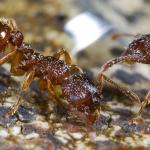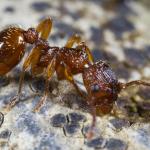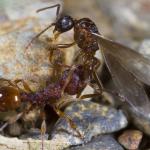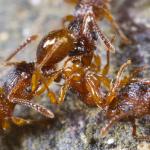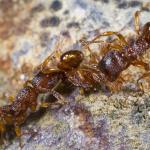Myrmica sabuleti is a red ant that favours warm, dry habitats. The base of the antennal scape is sharply bent and it has a lateral flange running along the basal part of its length. This flange can be more or less pronounced and is best seen by looking down from above the head. Specimens in which this extension is slight could be confused with M. scabrinodis Nylander, but they can be readily separated by studying the angle of the process relative to the funicular hinge; see Seifert, 2007 and Attewell, 2006. This species is the host of the caterpillar of the Large Blue Butterfly, Maculinea arion (Linnaeus).
Locally fairly common with most records from southern England, but is is also found in suitable habitats in Wales, Ireland and Scotland.
It is found throughout most of Europe.
This species is not regarded as scarce or threatened.
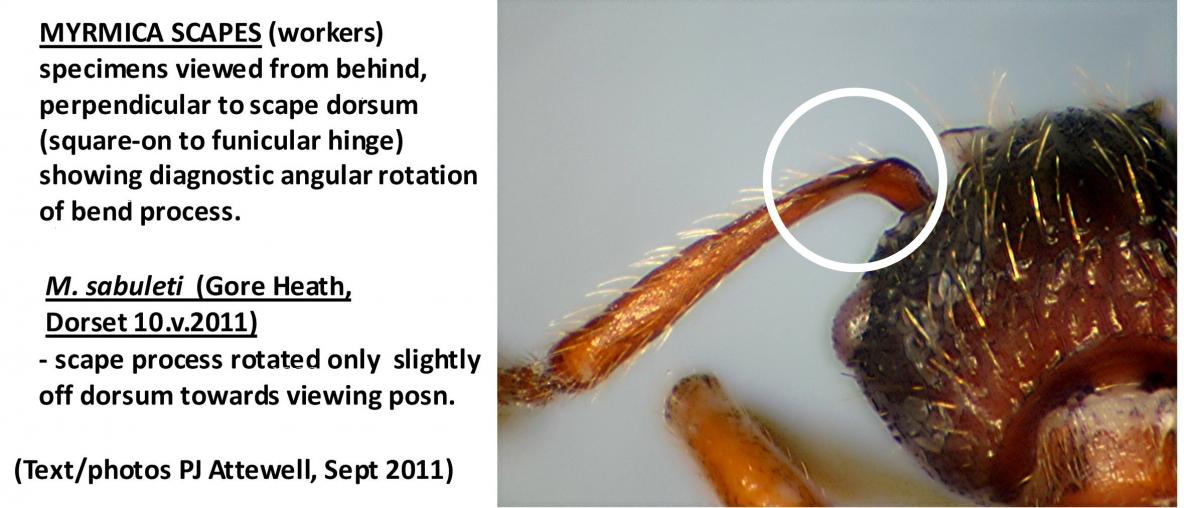
This species prefers open warm and dry habitats such as chalk downs, open sandy heaths and coastal dunes.
August to early September.
Nests often have more than one queen. Nests are usually under stones and seldom in tree stumps.
M. sabuleti like other Myrmica will eat small invertebrates either caught alive or found dead. They tend aphids. They are also attracted to sugary food such as damaged fruit.
2019


